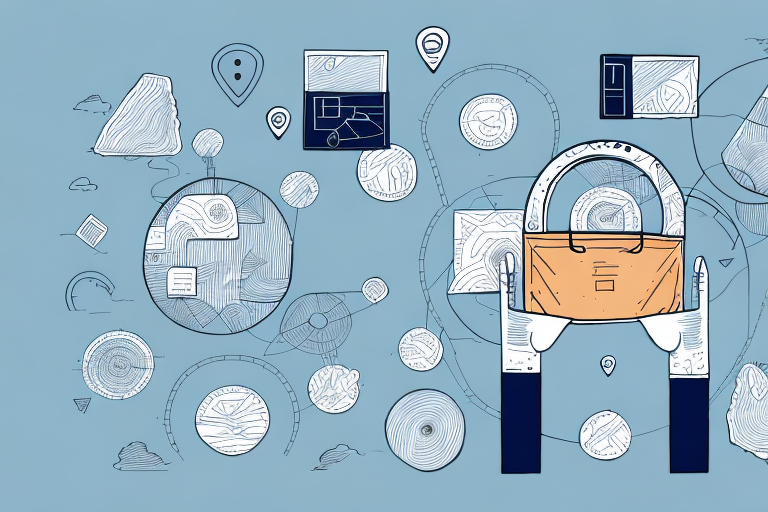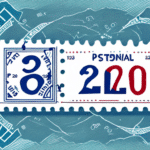Understanding the Importance of USPS Package Insurance
Shipping packages via the United States Postal Service (USPS) offers reliability and widespread accessibility. However, unforeseen incidents such as loss, damage, or delayed delivery can still occur. USPS package insurance serves as a safety net, providing financial protection and peace of mind for both senders and recipients.
Benefits of USPS Package Insurance
- Financial Protection: Covers the cost of lost or damaged items up to the insured value.
- Postage Reimbursement: Reimburses postage and shipping fees if the package is lost or damaged.
- Peace of Mind: Ensures that valuable or irreplaceable items are protected during transit.
With USPS package insurance, you can confidently send important documents, valuable goods, or sentimental items without the worry of unexpected losses or expenses.
Exploring Your USPS Package Insurance Options
USPS offers a range of insurance options tailored to different shipment values and needs.
Insurance Coverage Levels
- Basic Insurance: Covers items valued up to $50, typically included with Priority Mail services.
- Additional Insurance: Available for coverage up to $5,000 for more valuable shipments.
Additional Services
- Signature Confirmation: Requires recipient's signature upon delivery, enhancing security.
- Certified Mail: Provides proof of mailing and delivery, useful for legal and official documents.
It's important to note that while USPS package insurance covers the value of the item being shipped, it does not include the cost of shipping. Furthermore, certain items like perishable goods, hazardous materials, and live animals may have restrictions or may not be eligible for insurance coverage. Always review the USPS insurance policies and guidelines before shipping valuable or sensitive items.
Purchasing USPS Package Insurance Online
Securing insurance for your USPS packages is straightforward and can be done online through the USPS website.
Steps to Purchase Insurance
- Visit the official USPS website.
- Select the appropriate shipping service based on your needs.
- Enter the details of your shipment, including the value of the items.
- Select the insurance option that fits your coverage needs.
- Complete the payment process to finalize the insurance purchase.
After purchase, you will receive a confirmation and a tracking number, which you can use to monitor your package's status online.
Requirements for Insurance Claims
In the event that you need to file a claim for a lost or damaged package, you will be required to provide:
- Proof of the package's value, such as receipts or invoices.
- Proof of mailing, like a receipt with tracking information.
- Detailed description of the item's condition upon shipping.
Step-by-Step Guide to Tracking Your Insured USPS Package
Tracking your USPS package ensures that you can monitor its journey and anticipate its arrival.
Using the USPS Website or Mobile App
- Visit the USPS tracking page or open the USPS mobile app.
- Enter your tracking number in the designated field.
- Click "Track" to view the current status and location of your package.
Setting Up Notifications
USPS offers email and text message notifications to keep you updated without manual checks:
- Email Updates: Receive real-time tracking updates directly in your inbox.
- Text Alerts: Get SMS notifications for status changes and delivery confirmations.
Contacting USPS Customer Service
If you encounter issues with tracking or have questions about your shipment, USPS customer service is available to assist:
- Call the USPS customer service hotline.
- Email through the USPS website.
- Use the live chat feature available on the USPS website for immediate assistance.
Common Tracking Issues and Solutions
While USPS tracking is generally reliable, certain issues can arise. Understanding how to address these can save time and reduce frustration.
Delayed Tracking Updates
Delays in tracking information updates can occur due to high shipping volumes or system delays. If your tracking information hasn't updated in over 48 hours, consider:
- Verifying the tracking number for accuracy.
- Waiting an additional day as updates can be delayed.
- Contacting USPS customer service for assistance.
Inaccurate Tracking Information
Incorrect tracking data may result from scanning errors or misrouted packages. To resolve this:
- Double-check the tracking number.
- Reach out to USPS customer service for clarification.
- Confirm the package's shipping and destination details.
Lost Packages
If you suspect your package has been lost, follow these steps:
- Confirm the tracking history to identify the last known location.
- Contact USPS customer service to report the issue.
- File a claim for the lost package if insurance was purchased.
Steps to Take If Your USPS Package Goes Missing
A missing package can be a stressful experience, but there are systematic steps you can take to address the issue.
Verify Delivery Status
Check the tracking information to confirm whether the package was delivered. Sometimes, packages are marked as delivered before actual arrival.
Check with Neighbors and Secure Locations
Inquire with neighbors or building management if the package was delivered to an alternative location or was accepted on your behalf.
Initiate a USPS Claim
If the package is confirmed missing, begin the claims process by providing necessary documentation to USPS:
- Proof of value (receipts, invoices).
- Tracking information.
- Description of the package contents.
Preventing Lost or Damaged Packages with USPS Insurance
While accidents can't always be anticipated, you can minimize the risk of loss or damage with these preventive measures:
Use Sturdy Packaging
Choose strong boxes and secure packaging materials to protect your items during transit.
Properly Seal Packages
Use high-quality tape to ensure that your package remains sealed throughout the shipping process.
Label Clearly
Ensure that the mailing address is accurate and clearly printed to prevent misdelivery.
Consider Additional Services
Opt for services like signature confirmation or certified mail to enhance package security.
Delivery Times for Insured USPS Packages
The delivery time for an insured USPS package varies based on the selected shipping method and destination.
Common USPS Shipping Methods
- Priority Mail: Typically delivered within 1-3 business days.
- First-Class Mail: Usually arrives within 1-5 business days.
- Express Mail: Guaranteed overnight delivery to most locations.
Remember that delivery times can be affected by factors such as seasonal demand, weather conditions, and logistical challenges.
Managing Multiple USPS Package Shipments
Handling multiple shipments can be streamlined using USPS's tracking tools.
USPS Dashboard Tool
The USPS dashboard allows you to manage multiple tracking numbers in one place, offering a comprehensive view of all your shipments.
Benefits of Tracking Multiple Packages
- Centralized tracking for efficiency.
- Quick identification of delayed or missing packages.
- Consolidated status updates to stay informed.
Filing a Claim for an Insured USPS Package
If your insured package is lost or damaged, filing a claim promptly is essential to receive reimbursement.
Requirements for Filing a Claim
- Complete the USPS claim form online or at a post office.
- Provide proof of insurance purchase and package value.
- Include evidence of loss or damage, such as photographs or inspection reports.
Claim Processing Time
USPS claims typically take several weeks to process. Ensure all documentation is accurately submitted to avoid delays.
USPS vs. Other Shipping Carriers with Insurance
When choosing a shipping carrier, it's important to compare USPS with other major carriers like FedEx and UPS, especially regarding insurance options.
Pros of Using USPS
- Competitive shipping rates.
- Extensive network with over 31,000 post offices nationwide.
- Ability to ship to P.O. boxes and military addresses.
Cons of Using USPS
- Potentially longer delivery times compared to some carriers.
- Tracking accuracy can vary, especially during high-volume periods.
Comparison with FedEx and UPS
Other carriers may offer faster delivery options and more precise tracking services but often at higher costs. Evaluate the specific needs of your shipment to determine the best carrier.
Understanding Restrictions on Insured USPS Packages
USPS insurance policies come with certain restrictions and exclusions. It's crucial to be aware of these limitations to avoid surprises.
Items Not Covered by USPS Insurance
- Cash and negotiable instruments.
- Precious metals and stones.
- Perishable goods and live animals.
Coverage Limits
While standard insurance covers up to $5,000, certain items or services may have different coverage caps. Always verify the maximum coverage before shipping valuable items.
Policy Exclusions
Insurance does not cover:
- Damage due to improper packaging.
- Losses resulting from natural disasters.
- Packages sent internationally may have different rules.
Best Practices for Packaging with USPS Insurance
Proper packaging is vital to ensure that your insured items are protected throughout the shipping process.
Choosing the Right Packaging Materials
- Use corrugated cardboard boxes for strength.
- Include ample cushioning like bubble wrap or packing peanuts.
- Double-box fragile items for added protection.
Securing and Labeling Packages
- Seal packages securely with high-quality packing tape.
- Clearly print the recipient's and sender's addresses.
- Include a return address in case the package needs to be returned.
Documenting Package Contents
For valuable or insured items, consider documenting the contents:
- Photograph the items before packing.
- Keep receipts or invoices for all items included.
Conclusion
Utilizing USPS package insurance is a prudent step to safeguard your shipments against unforeseen mishaps. By understanding your insurance options, properly packaging your items, and actively tracking your packages, you can enhance the security and reliability of your shipping experience. Whether you're a frequent shipper or sending a one-time package, investing in insurance provides both financial protection and peace of mind.






















